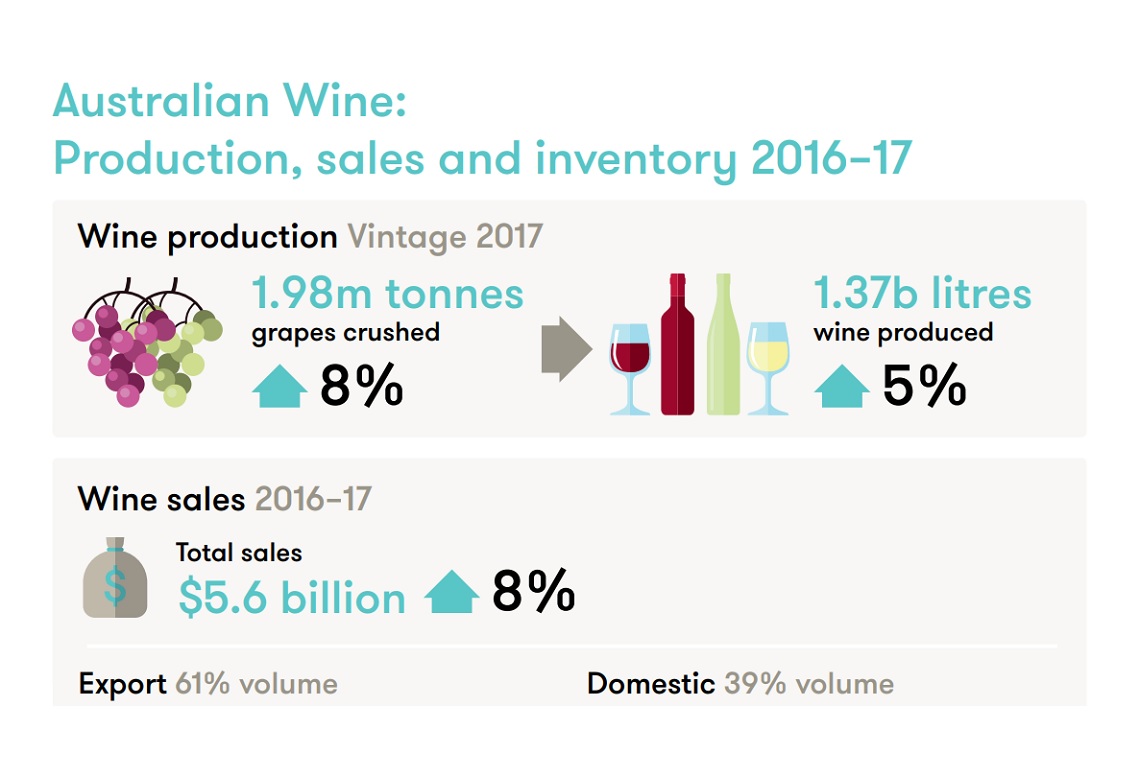A new report has shown that the Australian wine sector is in its strongest position for more than a decade, with historically high production levels, strong sales growth and solid inventory levels.
The findings have been published this week in the Australian wine: production sales and inventory 2016-17 report. The report highlights that the 2017 vintage was the second year of historically high production, with a grape crush of 1.98 million tonne, up eight per cent on 2016.
Overall wine production increased by five per cent to 1.37 billion litres, this was driven by a 15 per cent increase in red wine production up to 793 million litres, while white wine production declined five per cent to 576 million litres.
Wine Australia Chief Executive Officer, Andreas Clark, higlighted that the large Australian vintage was well-timed, with global production in 2017 estimated to be the lowest since 1961 at 24.6 billion litres, and Australia the only major wine producing country to have an above-average harvest.
“Australia is well-placed to take advantage of the opportunity, with stocks at reasonably high levels and well-established routes to market in the four largest wine markets in the world: the United States, United Kingdom, China and Germany,” Clark said.
“The additional tariff cuts on Australian bottled wine into China from January 1 2018 will further increase Australia’s competitiveness in the world’s fastest-growing major wine market, while on-going tariff cuts through the Japan–Australia Economic Partnership Agreement will also improve Australia’s competitiveness in Japan, the second biggest wine market in Asia behind China.”
The value of wine sales by Australian winemakers grew in both domestic and export markets, up by eight per cent to $5.6bn. Volume also increased, up by 59 million litres to 1.3 billion litres.
The report also showed an increase in total wine inventory, up by three per cent to 1.97 billion litres. This was again driven by red wine with a seven per cent increase to 1.09 billion litres while, white wine decreased by one per cent to 739 million litres. The stocks-to-sales ratios decreased slightly for both reds and whites.

